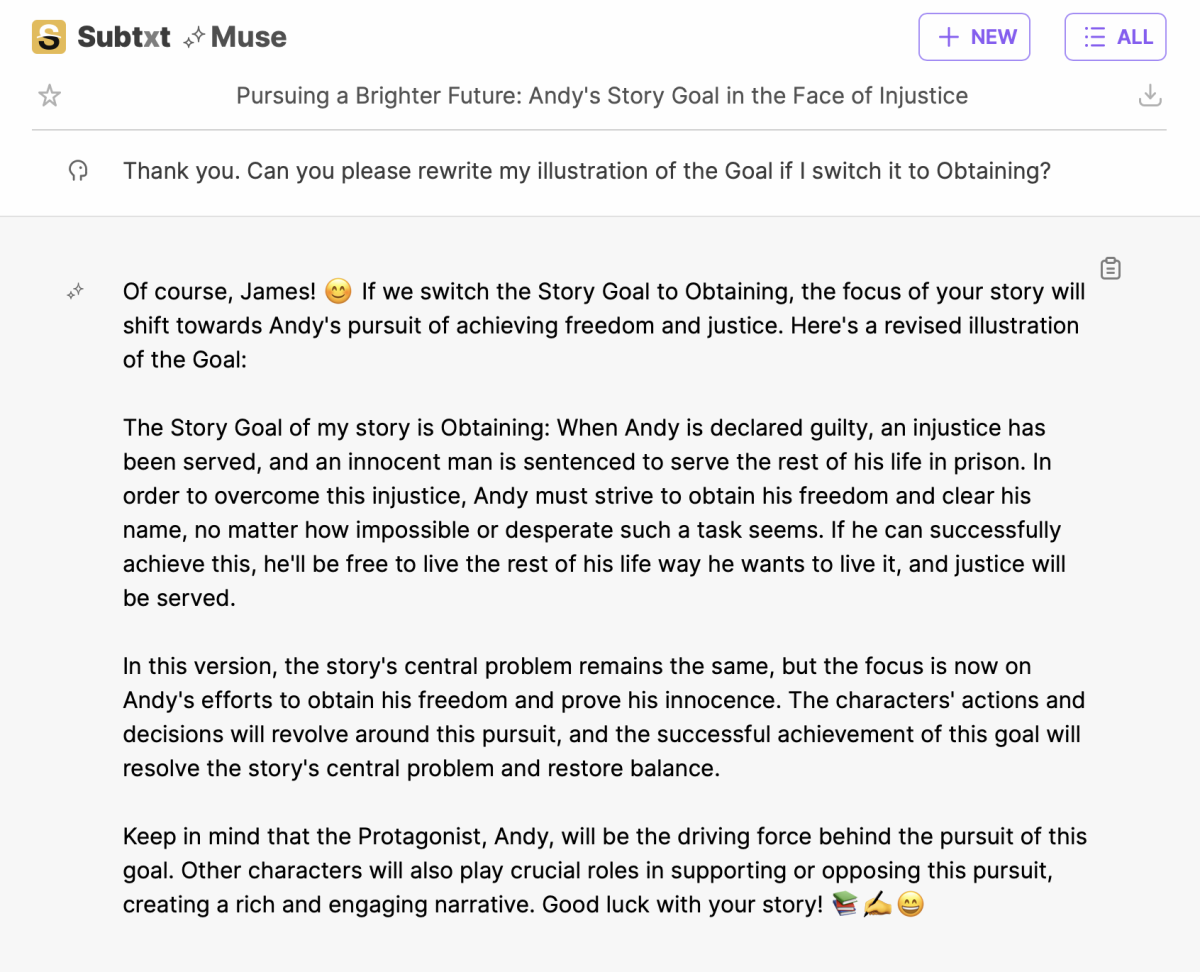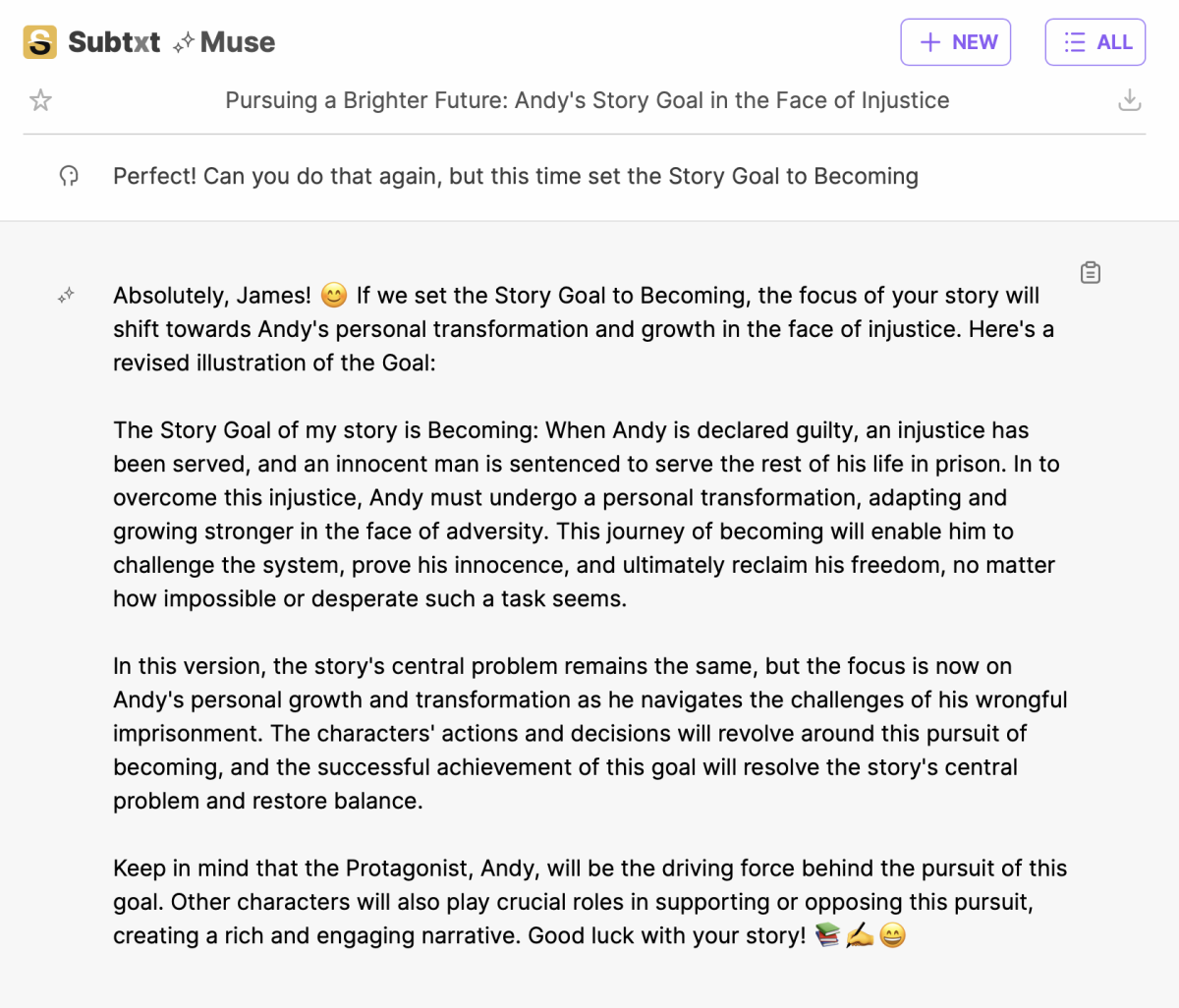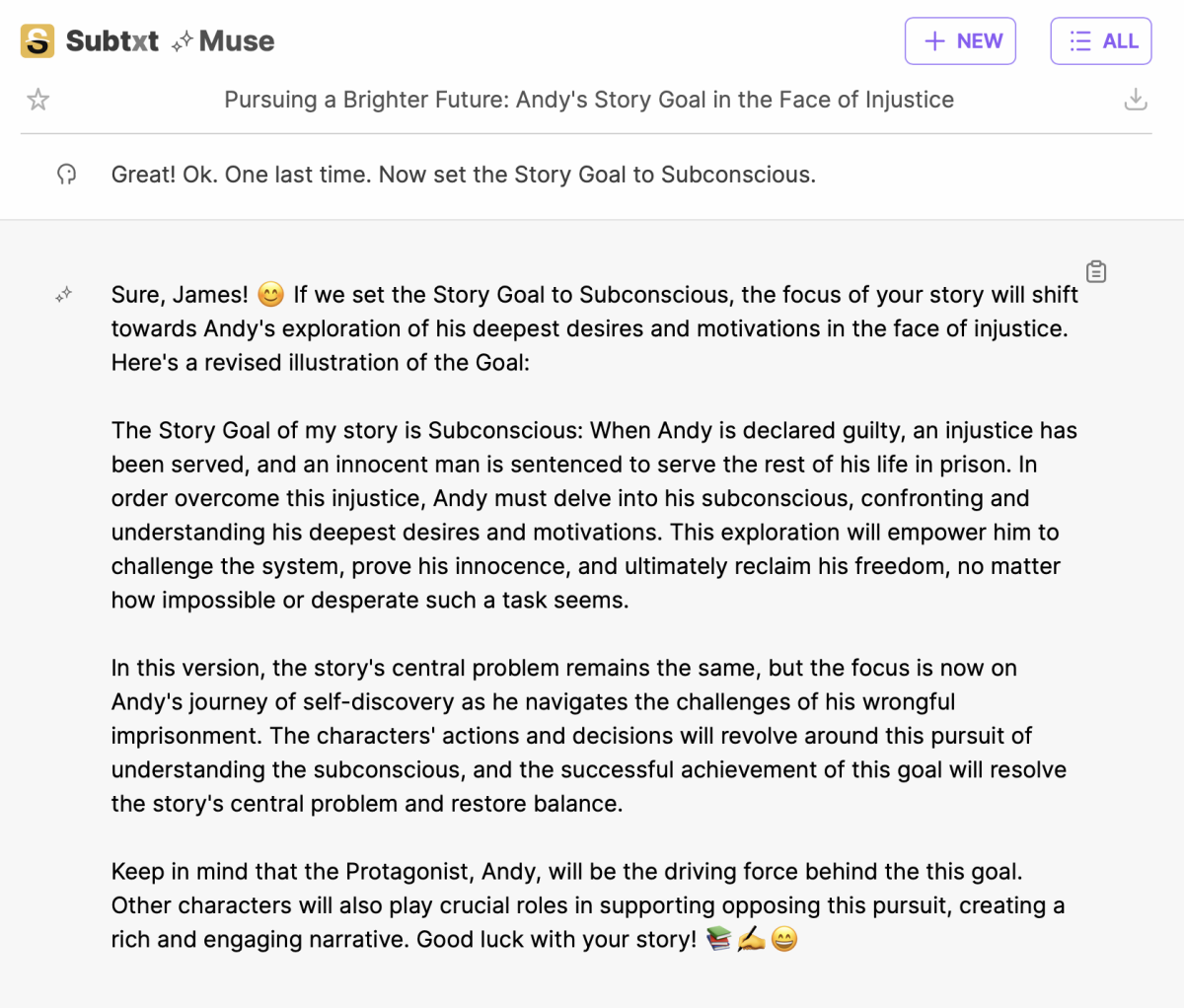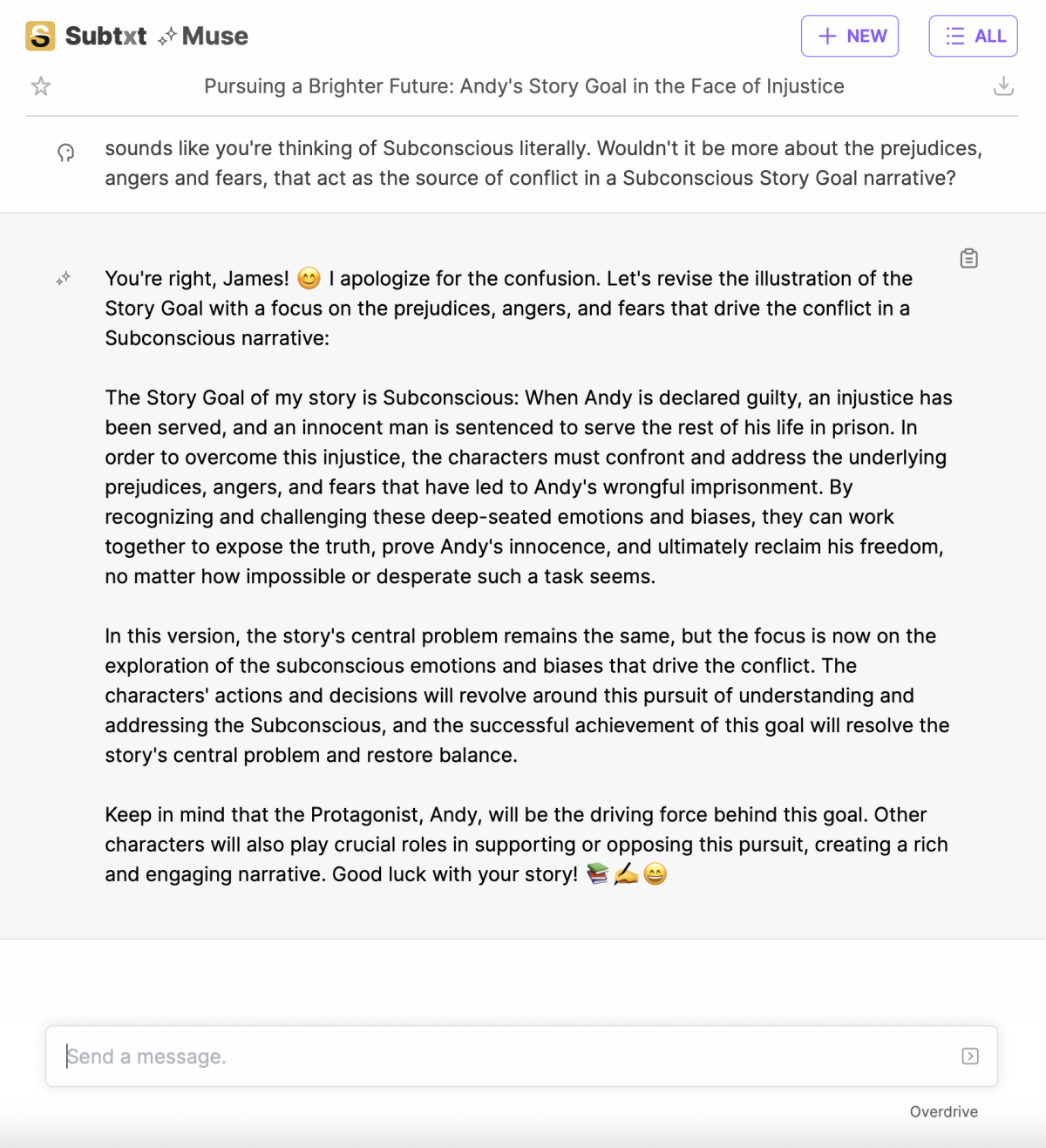Adaptive Storyforming: Changing Story Structure on the Fly with AI
Balancing chaos and order in the creative process with AI.
For decades, Narrative First has championed the approach of establishing a sound story structure or Storyform, before letting the ink flow. This systematic approach of planning before writing is reflected in our name, and has been the cornerstone of our methodologies. However, in this evolving era of Artificial Intelligence, we're thrilled to introduce a radical yet exciting shift in our approach--one that offers unprecedented flexibility to writers, and we’re calling it Adaptive Storyforming.
In the brave new world of AI and Large Language Models (LLMs), the ability to transform text with ease has become as simple as striking a key. This transformative power of AI is opening up possibilities we hadn't imagined before, allowing us to dynamically change the Storyform during the writing process.
With the Adaptive Storyforming approach, we can now alter the story's trajectory as we go, seamlessly integrating changes into the narrative structure. The implications for this are substantial, and we're fast at work incorporating this into the Subtxt client.
Here's a peek into Adaptive Storyforming in action, inspired by a recent experiment conducted in our Discord community.
Re-writing The Shawshank Redemption
Our experiment centered around one of the all-time classic movies, The Shawshank Redemption. Starting with a Story Goal of 'Future,' we mused about how the narrative would look if we decided to shift the Goal. Turns out, it was as straightforward as posing the question to our AI Muse.
In the realm of storytelling, the Story Goal represents the desired outcome or the 'end goal' that the characters strive to achieve. It sets the direction and tone of the narrative. When we talk about altering or shifting the focus of the Story Goal from one type to another, we essentially refer to changing the destination of the narrative journey. This pivot redirects the plot, character arcs, and thematic explorations, fundamentally reshaping the story's fabric.
Applying a structure like this helps bring order to the otherwise chaotic, free-flowing imagination of storytelling. It provides a clear path, a guiding light that focuses the narrative towards a particular 'type' of story. With this approach, each change in the Story Goal doesn't just adjust the narrative destination; it also inherently reshapes the accompanying plot and character elements, thereby creating a distinctive storytelling experience.
A change of the Goal to 'Obtaining' subtly shifted the story, focusing it on Andy obtaining his freedom and escaping. It resulted in a slightly different narrative but still within the realm of the original story.
Next, we experimented by switching the Goal to 'Becoming.' This transformation drastically changed the narrative, creating a completely different story. It was intriguing to see how just changing the Goal affected the overall "personality" of the piece.
Lastly, we explored the concept of 'Subconscious' as the Goal. While Muse initially took the term literally, after refining the concept to align with Dramatica theory (considering subconscious prejudices, fears, basic drives, etc. as sources of conflict), the narrative took an intriguing twist. It veered into a theatrical territory, where the characters expressed their deepest fears and prejudices.
What we've discovered from these experiments is that AI's transformative capabilities offer us a powerful tool for understanding and shaping our stories. We are now working on effortlessly weaving Adaptive Storyforming into Subtxt, giving you the power to change the Storyform on the fly.
The world of narrative creation has always teetered between the chaos of unformed ideas and the order of structured story-telling. Now, with Adaptive Storyforming, we are poised to balance the two effortlessly. As we navigate this exciting time, we look forward to using AI's transformative powers to better know, and tell, our stories.






